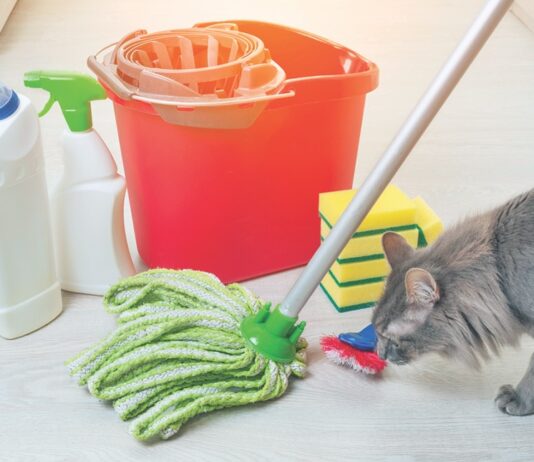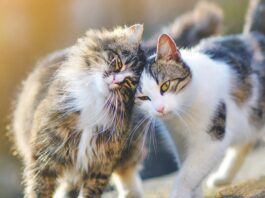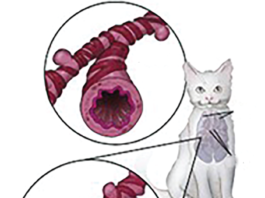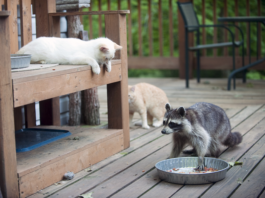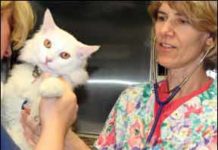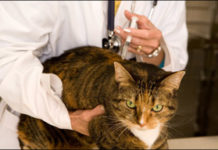The First Clue: A Persistent Cough
You may be accustomed to hearing your healthy and usually demure cat making hacking noises to try to bring up a hairball. But you’d be wise not to ignore these sounds. They could be an indicator of asthma, an inflammation of the airways that can make breathing difficult. A persistent cough warrants a veterinary exam as soon as possible.
Feline Upper Respiratory Infections
Your seven-year-old cat is a generally healthy animal. Except for a fleeting bout of gastrointestinal upset a few years ago, shes never had a really serious sick-day in her life. But your neighbors cat always seems to be ill. Every couple of months, she shows up on your doorstep wheezing and sneezing. Her eyes are red and watery, and she acts lethargic. These disturbing signs persist for a week or so, but then she seems to be okay again - for a while. Its quite likely that the cat next door is suffering from an upper respiratory infection, a highly contagious disease affecting her nose, sinuses, pharynx and larynx - the structures that filter, heat and dehumidify inhaled air before it flows to her lungs. Why is it, you wonder, that your cat never experiences this problem, while the cat next door cant shake it?
Diagnosis: Lungworm Infection
Each year, numerous cats are brought into to veterinary clinics throughout the U.S. showing the telltale signs of respiratory distress: labored breathing, chest constriction, wheezing and coughing. In most cases, the animal will be diagnosed with asthma, a mechanical constriction of the airways, or bronchi, the narrow network of tubes that lead directly from the trachea to the lungs. The narrowing of the airways occurs when a cat’s immune system overreacts to the presence of an allergy-producing substance, such as cigarette smoke, dusty kitty litter or pollen and responds to the presence of the allergen by releasing stimulants that cause a swelling of the tissue (mucous membrane) lining the bronchi. But while asthma is by far the most common cause of feline respiratory difficulty, veterinarians will often refrain from diagnosing it definitively until they have reviewed the results of a microscopic examination of the patient’s feces. Why? Because such a procedure could reveal the presence of lungworms in the animal’s respiratory tract — a situation that would produce asthmalike clinical signs but would require a significantly different approach to treatment.
Nasal Disease: Understand the Signs
Does your cat have a bad case of the sniffles? Its probably nothing to worry about. Just like you, your cat is apt to come down with a minor respiratory infection now and then, and it will pass. But if the runny nose that persists for more than a few days - and especially if the secretions thicken and become darker in color - you should take your pet to the veterinarian for an examination.
Why Is Your Cat Coughing?
A wide variety of irritants - from minor and transient to severe and indicative of a major health problem - can affect any portion of the feline respiratory system, whose purpose is to warm and humidify inhaled air, deliver oxygen to the lungs, and expel carbon dioxide and other waste gases. A complex pathway of tracts and organs, the upper respiratory system consists of the nose; two nasal passages; the nasal cavity (a hollow structure surrounded by air-filled spaces that are situated just above and below the eyes); and the pharynx (a cavity behind the mouth) that opens, via a passageway called the larynx; to a tubular structure, the trachea, a flexible tube commonly referred to as the windpipe.
Feline Respiratory Infections
Your best friends cat always seems to be ill. During your occasional visits to her home, the cat is often wheezing, sneezing and coughing. Her eyes are red and watery, and she acts lethargic. Your friend says that these signs tend to persist for a week or so - but then she seems to be all right again for a while. Its quite likely that the cat is suffering from a deeply rooted upper respiratory infection, a highly contagious disease affecting her nose, sinuses, pharynx and larynx - the structures that filter, heat and dehumidify inhaled air before it flows to her lungs.
Why Is Your Cat Coughing?
A wide variety of irritants from minor and transient to severe and indicative of a major health problem can affect any portion of the feline respiratory system, whose purpose is to warm and humidify inhaled air, deliver oxygen to the lungs, and expel carbon dioxide and other waste gases. A complex pathway of tracts and organs, the upper respiratory system consists of the nose; two nasal passages; the nasal cavity (a hollow structure surrounded by air-filled spaces that are situated just above and below the eyes); and the pharynx (a cavity behind the mouth) that opens, via a passageway called the larynx; to a tubular structure, the trachea, a flexible tube commonly referred to as the windpipe.
Feline Asthma: A Risky Business For Many Cats
More than 80 million cats currently live in American homes, and veterinary epidemiologists estimate that 800,000 or more of these animals - one percent or so of the nations domestic feline population - suffer from acute or chronic asthma. Although this condition - the most commonly diagnosed respiratory disorder in cats - is incurable, veterinary researchers are making progress in understanding its causes and devising methods for its effective treatment. Richard Goldstein, DVM, associate professor of small animal medicine at Cornell Universitys College of Veterinary Medicine, describes asthma as a constriction of the airways, or bronchi, the two narrow tubes that lead directly from the trachea to the lungs. The narrowing of the airways occurs when a cats immune system overreacts to the presence of an allergen and responds by releasing stimulants that cause inflammation and swelling of the sensitive tissue lining the bronchi and contraction of the surrounding muscle. This results in the narrowing of the airway and causes breathing difficulty (dyspnea), especially when exhaling. While specific asthma-causing agents typically remain unidentified, suspected allergens include tobacco smoke, dusty kitty litter; vapors from household cleaning solutions and aerosol sprays; pollen from trees, weeds and grass; mold and mildew; dust mites; smoke from fireplaces and candles; and even some foods.
For Asthmatic Cats, Relief May Be A Few Puffs Away
Inhalant therapy is revolutionizing the treatment of a tormenting feline affliction.
Feline Asthma: A Serious Condition
If left untreated, this disease can worsen and claim the life of your cat. Heres help.

